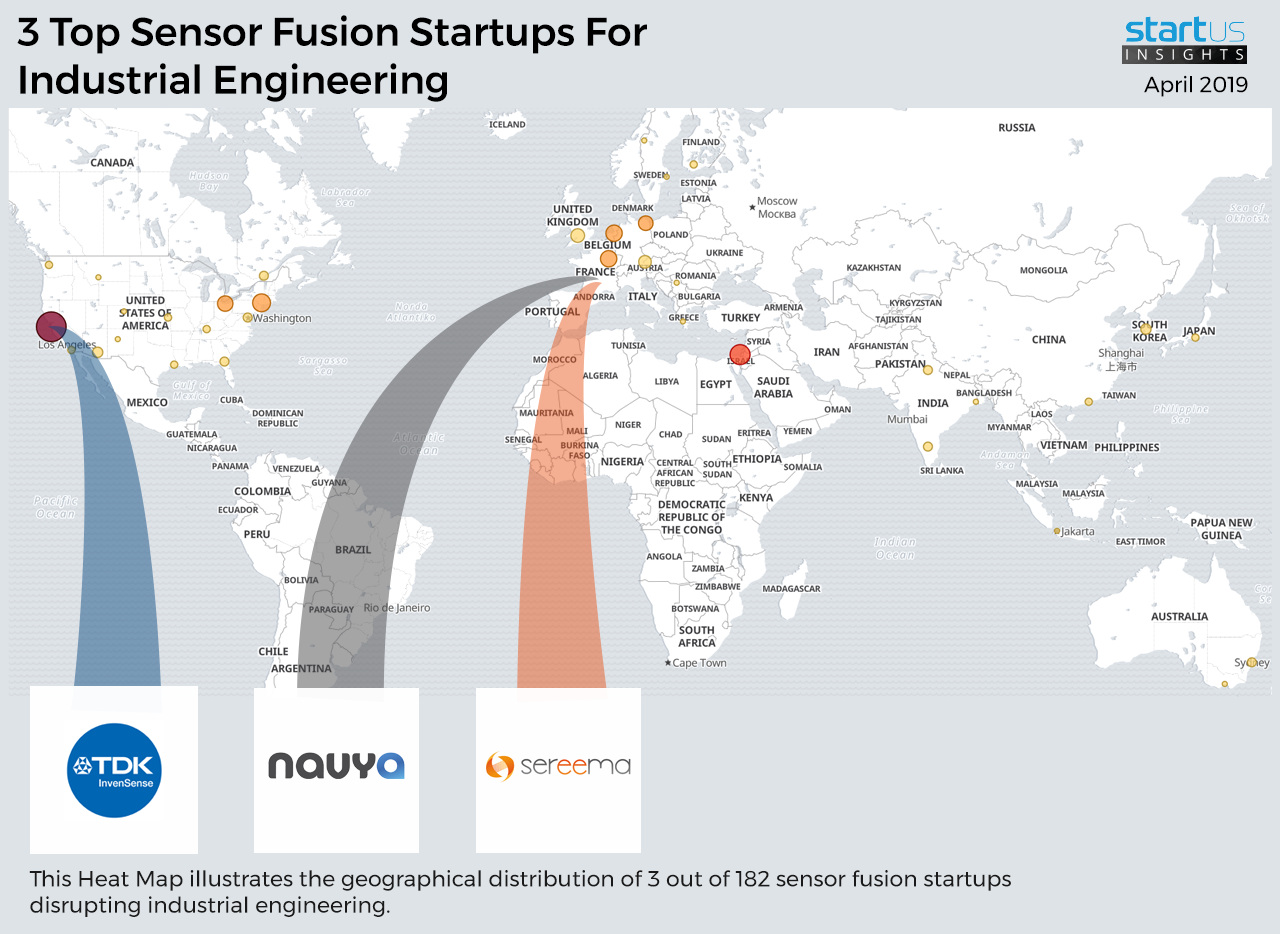Accelerate Productivity in 2025
Reignite Growth Despite the Global Slowdown
Our Innovation Analysts recently looked into emerging technologies and up-and-coming startups in the manufacturing industry. As there is a large number of startups working on a wide variety of solutions, we decided to share our insights with you. This time, we are taking a look at 3 promising sensor fusion solutions.
Heat Map: 3 Top Sensor Fusion Startups
For our 3 picks of sensor fusion startups, we used a data-driven startup scouting approach to identify relevant solutions globally. The Global Startup Heat Map below highlights 3 interesting examples out of 182 relevant solutions. Depending on your specific needs, your top picks might look entirely different.
Invensense – Positioning Based Sensor Fusion
Modern equipment requires very precise location accuracy to be able to perform in challenging environments such as wind turbine structural monitoring, autonomous system real-time location tracking and many more. Earlier positioning sensors required multiple sensors to be attached, however, with the advancement of modern micro-electrical mechanical systems-based (MEMS) sensor fusion devices, Initial Measurement Units (IMU), Accelerometers, and Gyroscopes can all be combined into a single sensor while maintaining a small form factor with greater accuracy and performance. California-based Invensense combines MEMS sensors such as accelerometers, gyroscopes, compasses, and microphones with proprietary algorithms and firmware. Therefore, they can intelligently process, synthesize, and calibrate the output of sensors, maximizing performance and accuracy. Their sensor fusion technology can be applied in wearable smart devices, drones, vehicles and more.
Navya – Perception Sensor Fusion
Today’s cars are fitted with a growing number of environmental sensors, such as radars, cameras, ultrasonic sensors, and lidars that perform a multitude of tasks. However, each sensor has its limitations. By combining the input from various sensors, individual systems complement each other and can achieve enhanced ADAS functions, such as cross traffic assist and autonomous obstacle avoidance. French startup Navya is a specialist in the autonomous vehicle industry, assisting cities and private sites around the world using their sensor fusion system called Navya Cognitiv. The system merges and processes data from sensors including lidars, cameras, radars, and odometry. This allows an autonomous system to move around efficiently and make the most appropriate decisions without a driver.
Sereema – Environmental/Structural Sensor Fusion
Industrial equipment sensor information is of the utmost importance to manufacturers. It helps better maintain and utilize the equipment. However, there are many restrictions to attaching sensors to such equipment such as their size, weight, etc. Sensor fusion allows a single system to collect multiple data points such as stress, strain, vibration and more while also wirelessly transmitting their gathered data. This circumvents the problems of individual sensor systems while providing greater price-performance-power ratios. French startup Sereema manufactures continuous monitoring and remote diagnostic sensors that are used in industrial equipment monitoring. Their wireless smart sensor is capable of taking data measurements of acceleration, temperature, pressure, rotation and more all within a single system, which also transmits the data wirelessly and safely to be analyzed.
What About The Other 179 Sensor Fusion Solutions?
While we believe data is key to creating insights it can be easy to be overwhelmed by it. Our ambition is to create a comprehensive overview and provide actionable innovation intelligence for your Proof of Concept (PoC), partnership, or investment targets. The 3 sensor fusion startups showcased above are promising examples out of 182 we analyzed for this article. To identify the most relevant solutions based on your specific criteria and collaboration strategy, get in touch.







